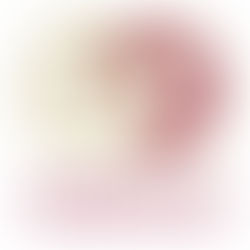Continued search for s/w Honey glaze: part 2
At this year's Pots in the Park exhibition I got to talk to Doug Fitch, who kindly offered to share with me his recipe for a honey glaze I saw on his stand that was fired to a high temperature. For various reasons I don't think this is the one for me though. Pity.
Discussing this with Dave he suggested that I might want to tinker around with Pam Hunter's LG by decreasing the lead content and upping the Feldspar thus substituting one flux for another that fluxes at a higher temperature.
Test:
One set of test tiles where I've reduced Lead Bisilicate from 70% to 60% and increased Feldspar from 10% to 20% and another set with Lead Bisilicate at 50% and Feldspar at 30%. Both sets have various oxides added and both are tested on red clay with white slip and the 70/30% batch I've also tested on white clay with red slip.

Result:
All tiles were fired to 1260°c in oxidation.

There wasn't really much of a difference between the different glaze mixes, i.e. the 10% more or less of Lead Bisilicate or Feldspar. However, the glaze test on the white clay body with the terracotta slip (middle row) were to best and gave me the most honey and lead glaze qualities. This will be the way I'll be progressing.
Another Test:
Based on the above test result I decided to see how these glazes would act on a horizontal surface. Thus I applied them to two little pinch pots made from ES40 clay with terracotta slip and incised lines.

The pot on the left was glazed with the LG50%/30% glaze with the following oxides:
one half with 4% copper ox / other half with 0.5% cobalt oxide / rim with 10% iron oxide
The pot on the right was also glazed with the LG50%/30% with:
one half 6% iron ox / other half with 10% iron ox / rim with 4% copper oxide



Result:
The cobalt blue is still too blue for me - needs less oxide which is easier to adjust for a larger batch of glaze.
The green could have 1-2% more copper oxide. Not sure it is strong enough to hold its own against any of the other glazes.
Maybe I should also try the 4% iron oxide version to see whether I get an even more honey effect.
All told, I'm quite pleased with the result. I'm slowly getting there. I need to pay more attention to the glaze application though. It needs to be thicker and more even. It seems that the addition of iron oxide makes it more likely to run but it isn't to bad though.

















